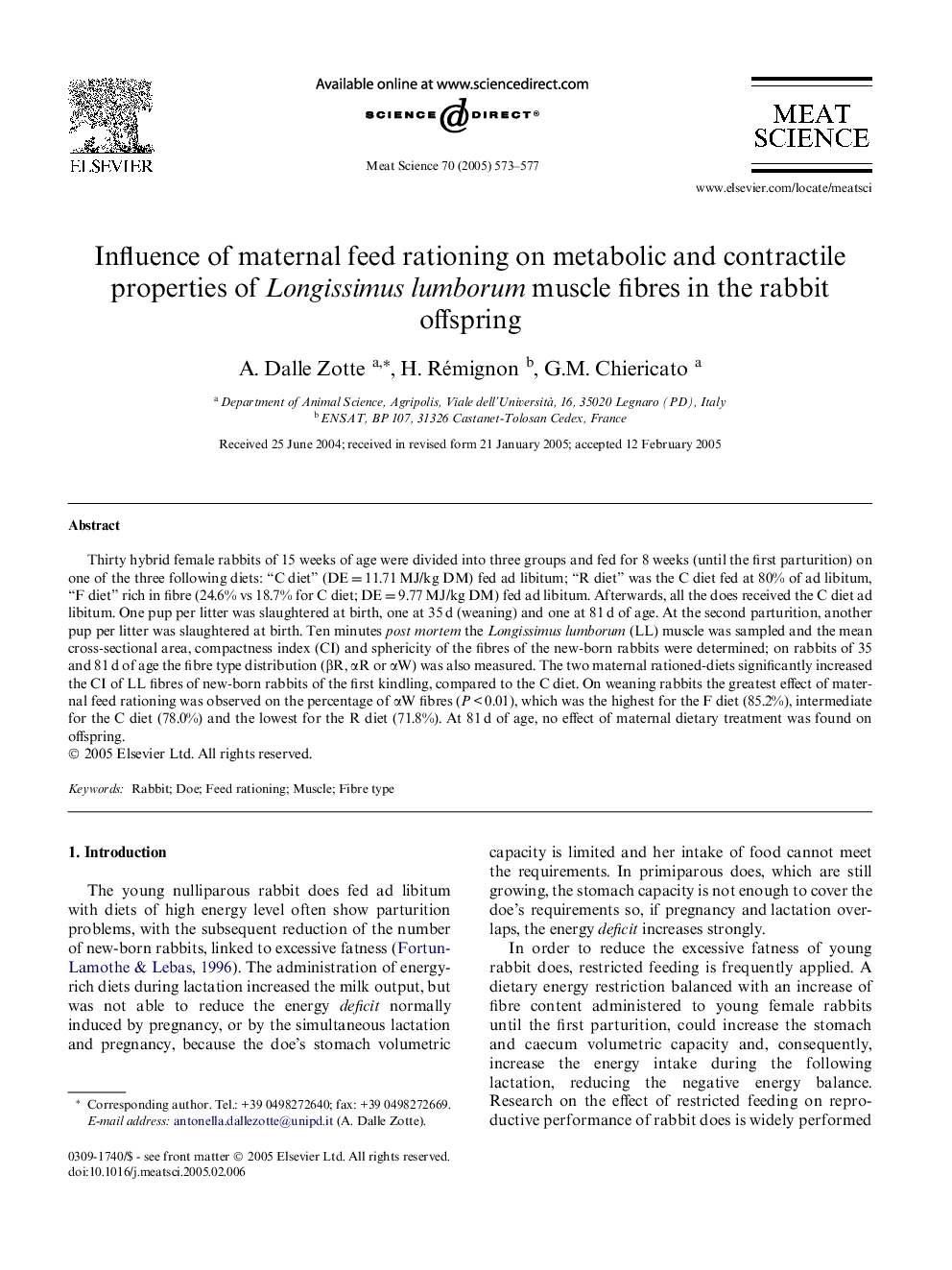| Article ID | Journal | Published Year | Pages | File Type |
|---|---|---|---|---|
| 8983509 | Meat Science | 2005 | 5 Pages |
Abstract
Thirty hybrid female rabbits of 15 weeks of age were divided into three groups and fed for 8 weeks (until the first parturition) on one of the three following diets: “C diet” (DE = 11.71 MJ/kg DM) fed ad libitum; “R diet” was the C diet fed at 80% of ad libitum, “F diet” rich in fibre (24.6% vs 18.7% for C diet; DE = 9.77 MJ/kg DM) fed ad libitum. Afterwards, all the does received the C diet ad libitum. One pup per litter was slaughtered at birth, one at 35 d (weaning) and one at 81 d of age. At the second parturition, another pup per litter was slaughtered at birth. Ten minutes post mortem the Longissimus lumborum (LL) muscle was sampled and the mean cross-sectional area, compactness index (CI) and sphericity of the fibres of the new-born rabbits were determined; on rabbits of 35 and 81 d of age the fibre type distribution (βR, αR or αW) was also measured. The two maternal rationed-diets significantly increased the CI of LL fibres of new-born rabbits of the first kindling, compared to the C diet. On weaning rabbits the greatest effect of maternal feed rationing was observed on the percentage of αW fibres (P < 0.01), which was the highest for the F diet (85.2%), intermediate for the C diet (78.0%) and the lowest for the R diet (71.8%). At 81 d of age, no effect of maternal dietary treatment was found on offspring.
Keywords
Related Topics
Life Sciences
Agricultural and Biological Sciences
Food Science
Authors
A. Dalle Zotte, H. Rémignon, G.M. Chiericato,
